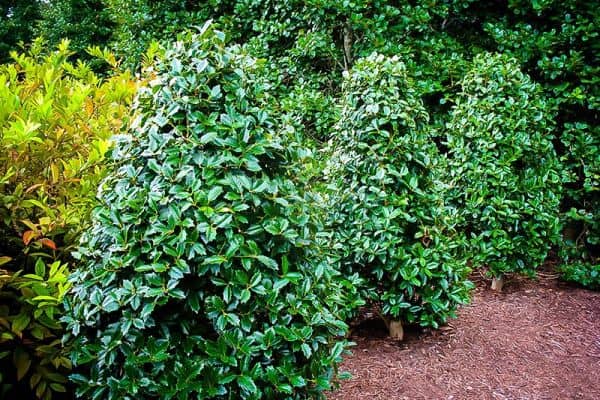Oakland Holly is an evergreen tree that can grow up to 15 feet to 20 feet tall, with a width of between 8 and 15 feet.
So in this section, you will learn how to care for and grow the Oakland Holly tree:
Oakland Holly Care and Growth
Oakland Holly is one of the best evergreen trees that will look fabulous standing at the front door of your house or even provide some heavy shade in the corner of the landscape. This plant also takes minimal care and provides a beautiful landscape. So here is how you can care for and grow Oakland Holly for your garden:
1. Light
As for light Oakland Holly needs partial shade, with some full sun exposure during the day. If extreme heat happens in your zone you can provide Oakland Holly with some protection from the afternoon sun. During the hot season, you can help Oakland Holly keep the dark green foliage look by providing your Oakland Holly tree with part sun.
2. Soil
As for soil Oakland Holly needs slightly acidic soil and well-drained soil to prevent roots from rotting. They can survive in most of the soil conditions except they need good drainage to prevent Oakland Holly roots from rotting. You can also add some elemental sulfur to add acidity to the soil and to lower the alkaline pH level.

3. Water
As for water Oakland Holly needs twice a week or more during extreme heat when they are young trees. Remember to not overwater them as their roots may rot, you can amend the soil around the root ball and deep watering but do it slowly.
4. Temperature & Humidity
As for temperature and humidity, Oakland Holly prefers cooler temperatures and is hardy to frost.
5. Fertilizing
As for fertilizer Oakland Holly needs Espoma bio-tone starter fertilizer when they are planted in your garden and you can also, mix the slow-release fertilizer in with the soil. After the Oakland Holly tree is well established then you can use the Holly Tone from Espona, an all-natural plant food. Remember to feed the Oakland Holly during the early spring to summer growing season to encourage new growth and berries.

6. Pruning
As for pruning Oakland Holly needs to be four feet tall and is used as a hedge for them to be pruned. Remember only to cut the sides to remove not more than four inches of growth and never cut the top leader but only the sides as cutting the top leader will slow the height growth of the Oakland Holly. You can start pruning the Oakland Holly after new growth stops growing and matures.
Some of the Extra information on Oakland Holly
- Bloom/Feature: Distinctive bright green oak-shaped leaves
- Evergreen or Deciduous: Evergreen Plant Hardiness Hardy to -10 degrees Fahrenheit to 0 degrees Fahrenheit.
- Key Features: Compact Habit, Deer Resistant, Upright Habit
- Flowering Season: None
- Uses: Hedge, Privacy Planting
- Water Needs: Medium
- Fertilize: Yearly in early spring
- Pruning: Shape in early spring before first flush
- Planting Instructions: Water before planting | Plant in full sun to part shade | Dig hole 2X the width of pot | Plant 1-2 inches above ground soil level, backfill hole with soil | Water deeply to settle, then add more soil if needed | Mulch 1-2inches deep around the plant, avoiding area closest to stem
FAQs:
Q. How big does Oakland Holly get?
Oakland holly tree can grow up to 15 feet to 20 feet tall, with a width of between 8 and 15 feet.
Q. What is the difference between Oakland and Oakleaf Holly?
There is not much difference between Oakland and Oakleaf Holly as Oakland has branches more readily and Oakleaf Holly grows long, unbranched central leaders that must be pruned.
Q. Where did the Oakland Holly come from?
Oakland Holly came from Poplarville, Mississippi in 1994 and was discovered by Jack Mitchell Magee at Evergreen Nursery.
Also Read: How to Grow and Care for Croton Plants? Learn Guide And Tips!
